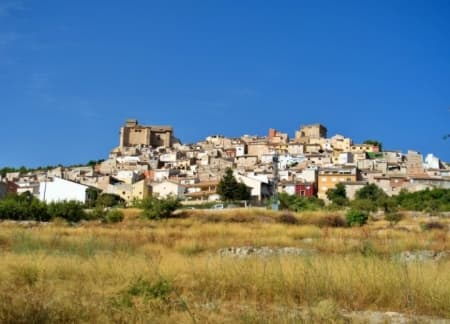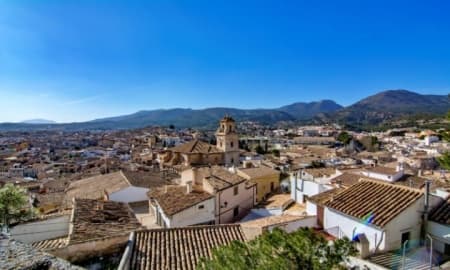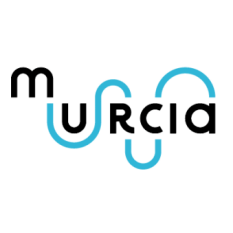
History of the Noroeste region
The Noroeste region in Murcia has an area of 237,900 hectares and borders the provinces of Albacete, Granada and Almeria.
According to the regional division drawn up by the Regional Council in 1980, the Noroeste region in Murcia is made up of five municipalities: Caravaca de la Cruz, capital of the region with 25,760 inhabitants and 859 square kilometres; Cehegin, with 14,983 inhabitants and 292.7 square kilometres; Bullas, with 11,530 inhabitants and 82.2 square kilometres; Calasparra, with 10,178 inhabitants and 193 square kilometres; and Moratalla with 7,839 inhabitants and 954.82 square kilometres (data from 2019).
The Noroeste region in Murcia is a region in which the many vestiges of its history all came together to define its culture: the presence of prehistoric remains, the arrival of the Roman Empire, the different populations of ethnic-religious origin, the medieval periods of Muslim and Christian presence and the rebirth as a cultural movement..
Each of its municipalities are impregnated with these vestiges to a greater or lesser extent, depending on the cultural presence of these populations and the geographical characteristics of each one of them.
Moratalla

The first inhabitants of Moratalla date back more than 10,000 years and left samples of their art in numerous sites with cave paintings. In the municipality of Moratalla alone there are more than fifty percent of all the cave paintings in the Region of Murcia, all declared by UNESCO as World Heritage Sites since 1998.
From the Roman era we find mainly rustic villas, as well as an important Roman presence in the exploitation of the salt flats. Agriculture and livestock has been the economic base of the town since the 16th century. Previously, fears of Arab incursions from Granada had not made population stability possible.
From the Roman era we find mainly rustic villas, as well as an important Roman presence in the exploitation of the salt flats. Agriculture and livestock has been the economic base of the town since the 16th century. Previously, fears of Arab incursions from Granada had not made population stability possible.
Currently, Moratalla's economy depends mainly on agriculture, mainly with the cultivation of almond, apricot and olive trees. In recent years, like many other municipalities in the area, it has begun to develop rural and cultural tourism.
Caravaca de la Cruz
Caravaca de la Cruz has its most remote origins in the “Cerro del Castillo,” where various cultures have settled since prehistoric times. During the Muslim occupation, Caravaca de la Cruz was able to maintain itself as a Christian settlement in the middle of the territory occupied by the Arabs, a situation that ended with the reign of Abderraman II.
According to legend, in 1232 the Moorish king Abu Zeid converted to Christianity when he saw two angels lowering a cross from heaven so that a priest imprisoned in the castle could say mass.
According to legend, in 1232 the Moorish king Abu Zeid converted to Christianity when he saw two angels lowering a cross from heaven so that a priest imprisoned in the castle could say mass.

The most important festivals in Caravaca de la Cruz are those of the “Santísima y Vera Cruz,” designated of International Tourist Interest, which include the Moors and Christians parades and the impressive races of the Wine Horses.
Cehegin and Bullas
Cehegin has its foundation in the different cultures that settled in it, from the first settlers dating back to 2,400 B.C. Its old town, declared a Historic Artistic Site in 1982, is one of the great attractions of this town of the Murcia province. Here the stately houses stand out with their different styles including Renaissance, Murcian Baroque, Rococo and Neoclassical; and of course the Churches of Saint Mary Magdalene, Solitude and Conception.
Bullas has been a human settlement since the Neolithic period (2,000 B.C.). The Romans also left numerous testimonies of their presence, as well as the Muslims, who occupied the space with a small urban nucleus.
The Bullas heritage highlights the Parish Church of Our Lady of the Rosary, declared a National Heritage Site in February 1982 and in the Baroque style, but with neoclassical and romantic elements.
The Bullas heritage highlights the Parish Church of Our Lady of the Rosary, declared a National Heritage Site in February 1982 and in the Baroque style, but with neoclassical and romantic elements.
Calasparra
Calasparra has a great monumental archaeological and artistic legacy thanks to the presence in ancient times of Iberians, Romans, Arabs and Christians, who have left a deep and indelible mark on the history of this beautiful population.A visit to the Sanctuary of Hope, patroness saint of Calasparra, is an unforgettable experience. The hermitage is located in a natural crevice, from whose stone ceiling a water spring emanates.
The driving force of the Calasparra economy is agriculture, highlighting the cultivation of rice, a product par excellence of the area and which has a Designation of Origin since 1982. In recent years, as in the entire region, rural tourism has been promoted.










